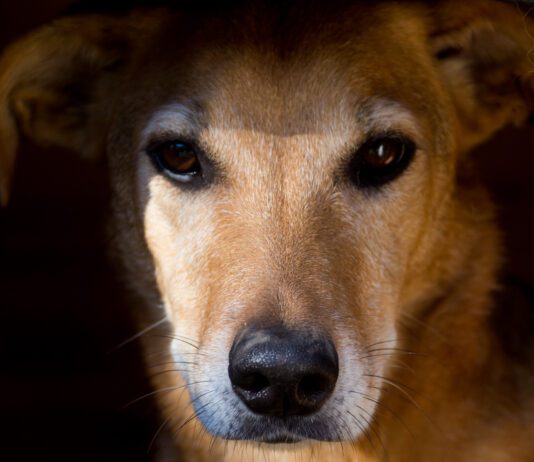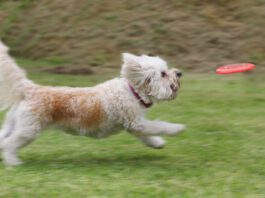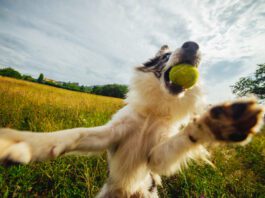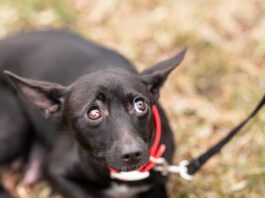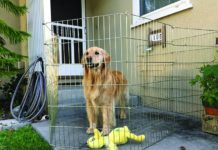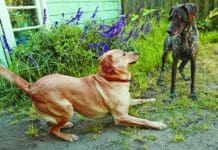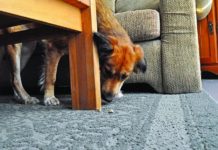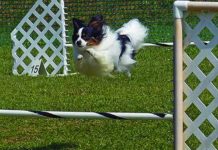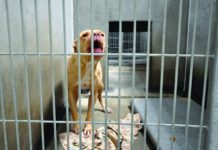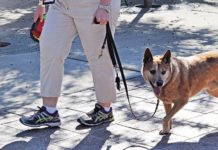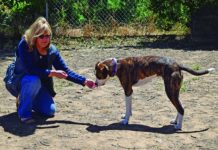Do Electric Shock Collars Harm Dogs?
Do you use an underground electric shock fence to contain your dog? Are you considering having one installed? I hope reading this will change your mind. More and more neighborhoods prohibit or limit the useof fencing, and as this occurs, the use of these non-visible electric shock perimeters has drastically increased. Manufacturers and retailers claim that these products are humane, effective means by which to safely confine dogs without disrupting the aesthetics of neighborhoods.
Put A Stop to Door-Darting Dogs
Door darting is an impulse-control problem. It's also incredibly self-rewarding. Remedying the issue requires teaching the dog to exhibit self-control around an open door, while employing diligent management to prevent the rehearsal of unwanted behavior. The following tips can help.
Ways to Calm Down Your High Energy Dog
such as terriers
Nose Work is Great Exercise for Dogs!
When your dog has learned how to search, this makes a great rainy day indoor exercise activity. You can also routinely scatter her meals around the yard so she has to search through the grass to find them; put her on a long line if you don't have a fence. You can also name her favorite toys and have her find them. You can even have family members and friends hide and have her find them.
Stop Your Dog’s Demanding Behavior
A dog's demand behavior is her effort to communicate her wants and needs to you. Her demand behaviors increase in intensity because she is frustrated when she doesn't get what she wants. Imagine how frustrating it would be to keep asking for something and have someone deliberately ignore your requests. No wonder she gets frustrated!
Fulfill Your Dog’s Ancestral Calling with Job-Specific Activities
where the dogs helped with herding dairy cattle
Managing Dog-Aggressive Dogs in the Family
If you do nothing else about the aggression between your dogs, you must scrupulously manage their movements and activities. Every time your dog successfully engages in a behavior that you don't want her to exhibit, it makes it that much harder to convince her that it's not a useful behavior strategy. Every time your dog aggressively communicates to another canine family member, it increases the potential for unresolvable aggression between the two and serious injury to one or both.
Train Your Dog to Accept Hugs
The process of teaching a dog to tolerate hugging involves either classical conditioning (giving a puppy a positive association with something she doesn't already have an opinion of), or classical counter-conditioning (giving a dog a new association with something she already has a negative opinion of). Either way, the process is similar, but it may go slower if you are working to change an existing opinion rather than simply installing one where none previously exists.
Teach Your Dog to Make Eye Contact
If your dog doesn't already know the value of eye contact with humans, you can easily teach her. This is an operant conditioning/positive reinforcement exercise your dog learns her behavior can make good stuff happen. When your dog has come to realize the value of eye contact, she will sometimes offer the behavior without being cued. Be sure to reinforce offered eye contact as well as cued eye contact. To help her be comfortable with eye contact from other humans, ask your friends to play the Watch" game with her as well."
Canine Body Language Danger Signs
Dogs almost always give clear signals though the signs may be subtle before they bite. A bite without warning" is truly a rare occurrence. Most of the time the human just wasn't listening
How to Help a Leash-Reactive Dog
Beyond the human hang-ups and logistical challenges associated with a dog who now displays reactive behavior in the presence of other dogs, we must consider the impact on the dog. Reactive outbursts are the product of distress, and distress is serious business. It takes a long time for the body to recover from the jolt of hormones that happens during a distressful event. This altered brain state can leave your dog susceptible to triggers he might not otherwise react to, which is why many dogs can seem edgy" for some time following a particularly stressful event."
Listening to Your Dog’s Body Signals
The dog training world has become exponentially more aware of the significance of dog body language communication over the past two decades. We know how critically important it is in keeping dogs and people safe, and in building relationships of mutual trust and respect that result in lifelong bonds between canines and their humans. And yet we still see training and behavior professionals as well as regular dog owners who utterly fail to understand what their dogs are desperately trying to say to them.


